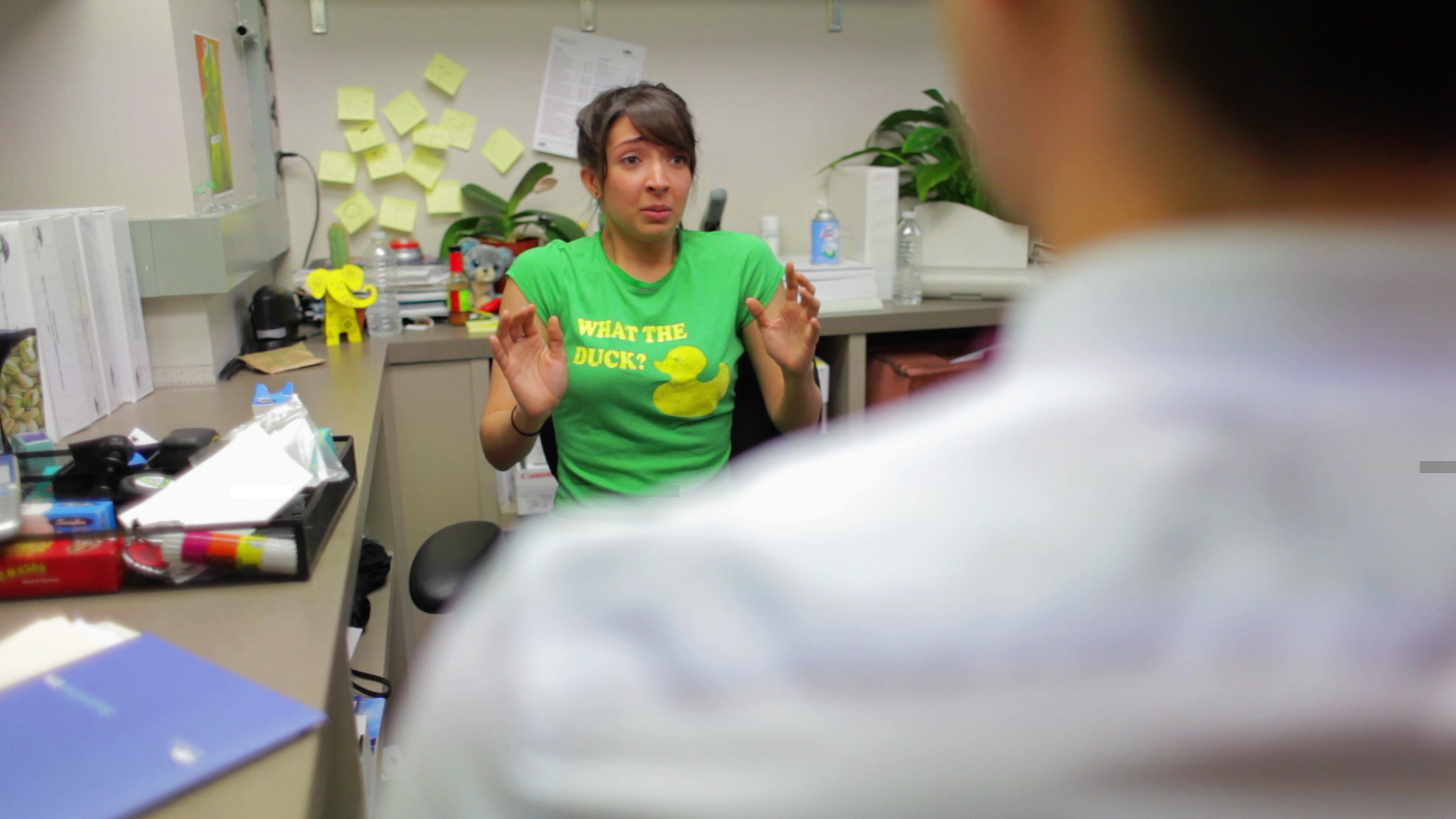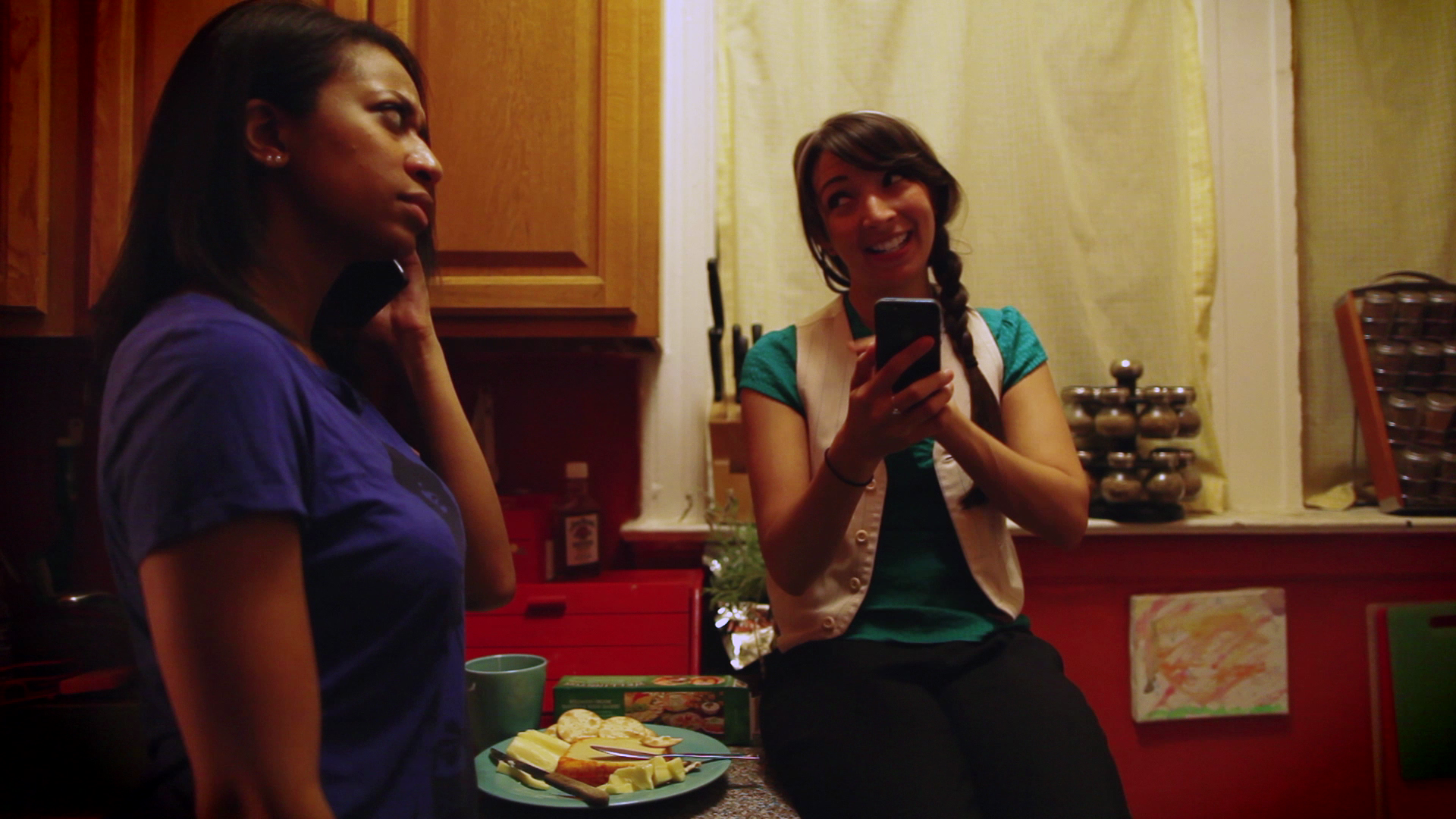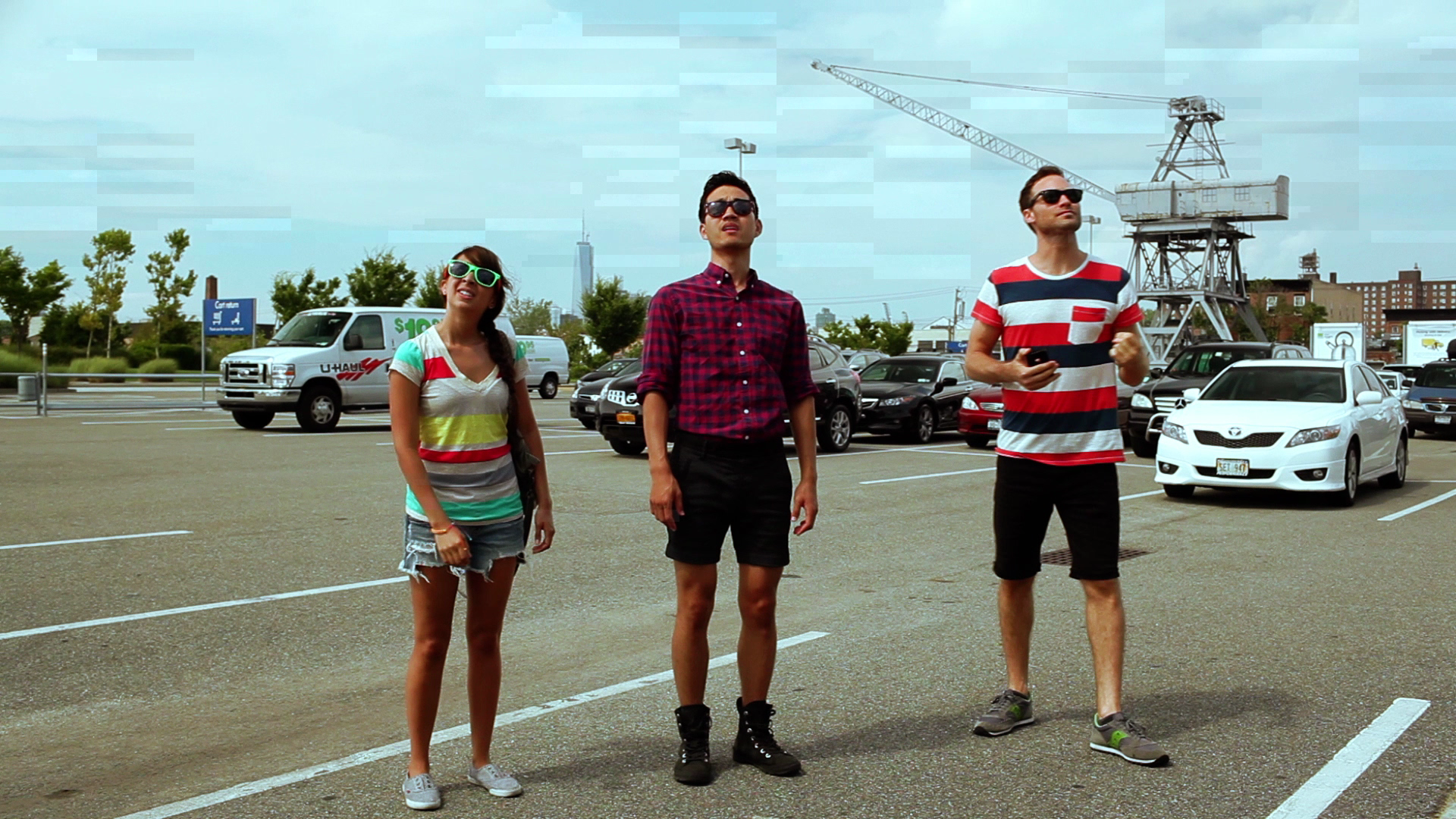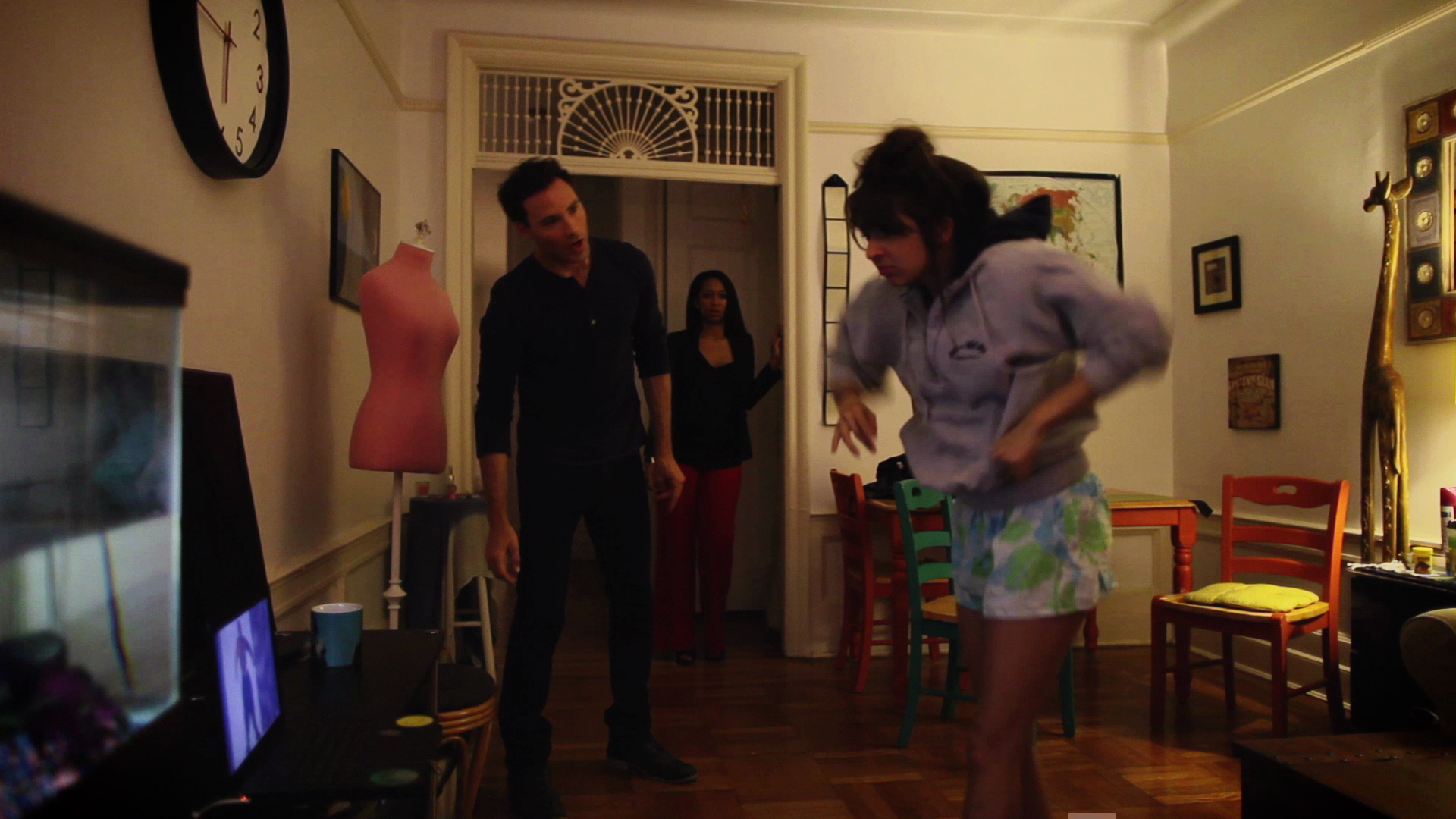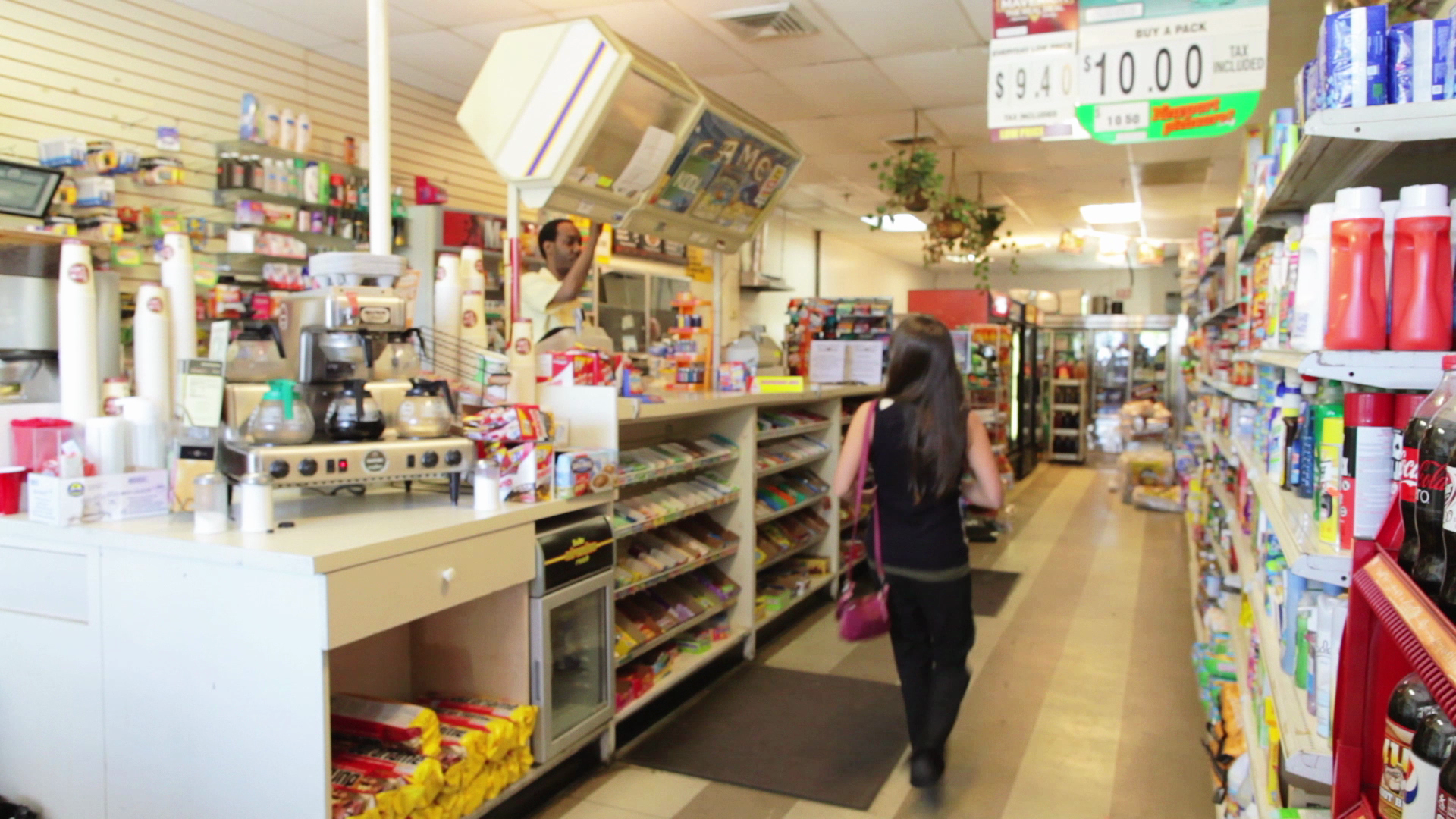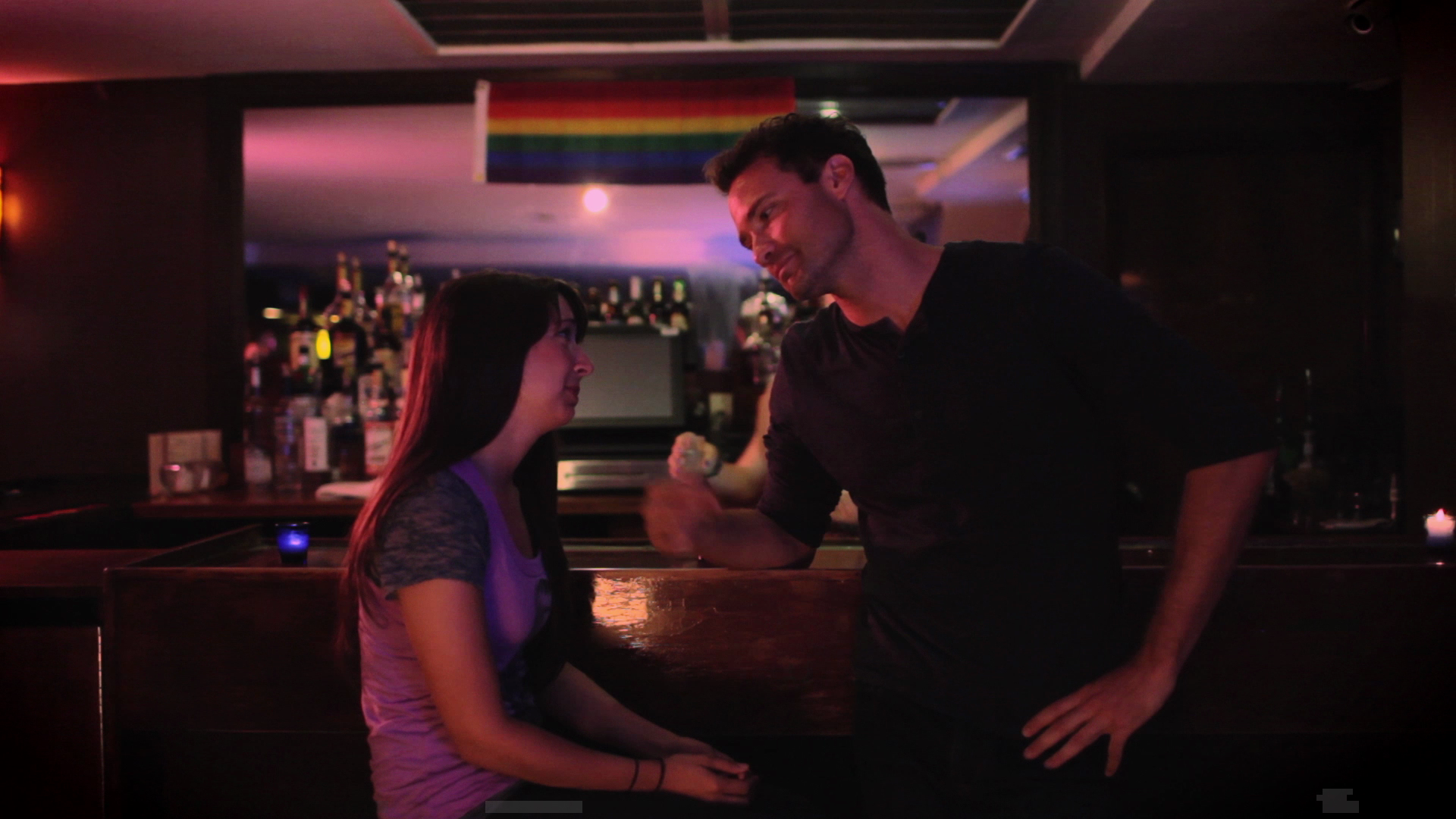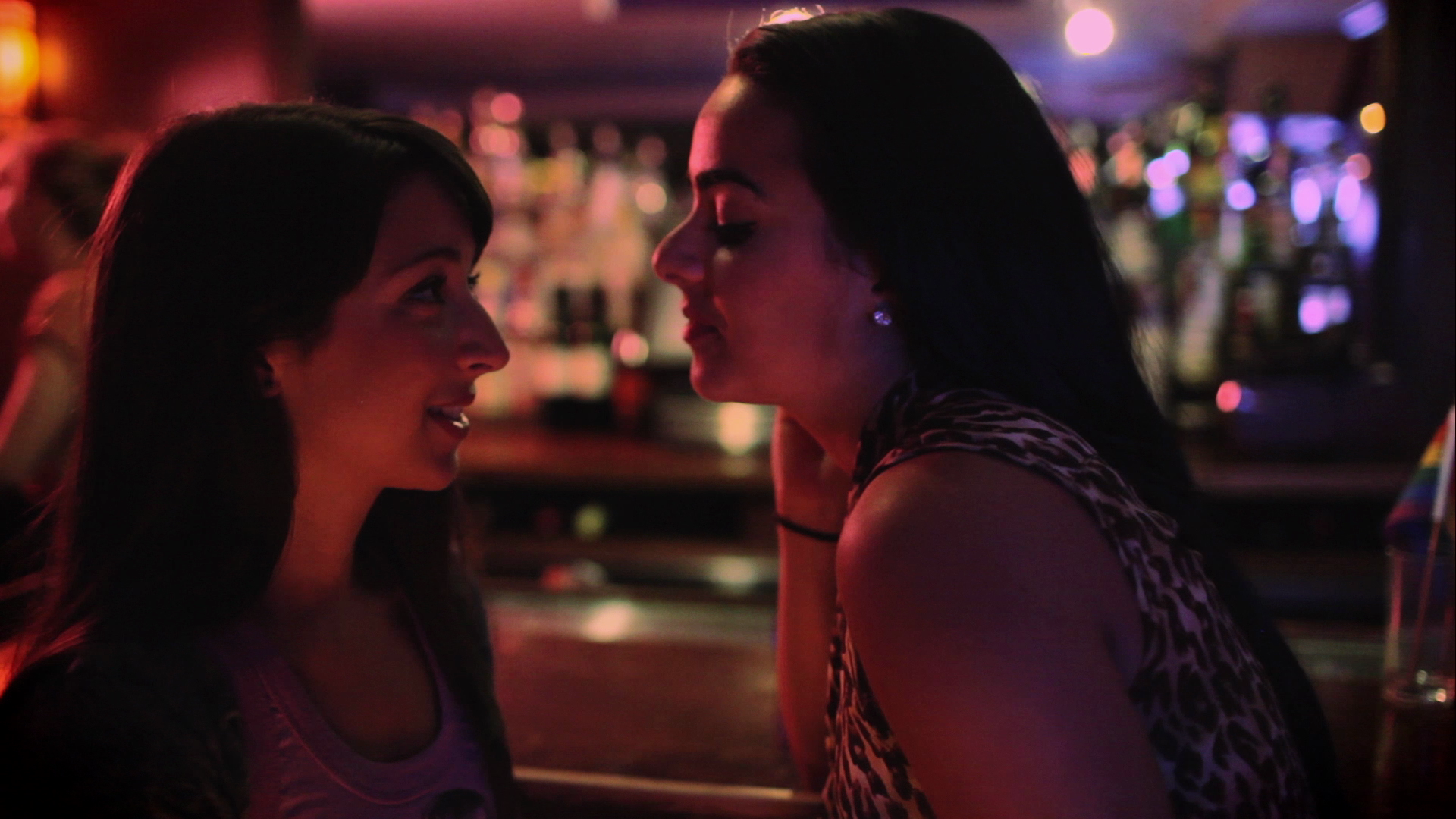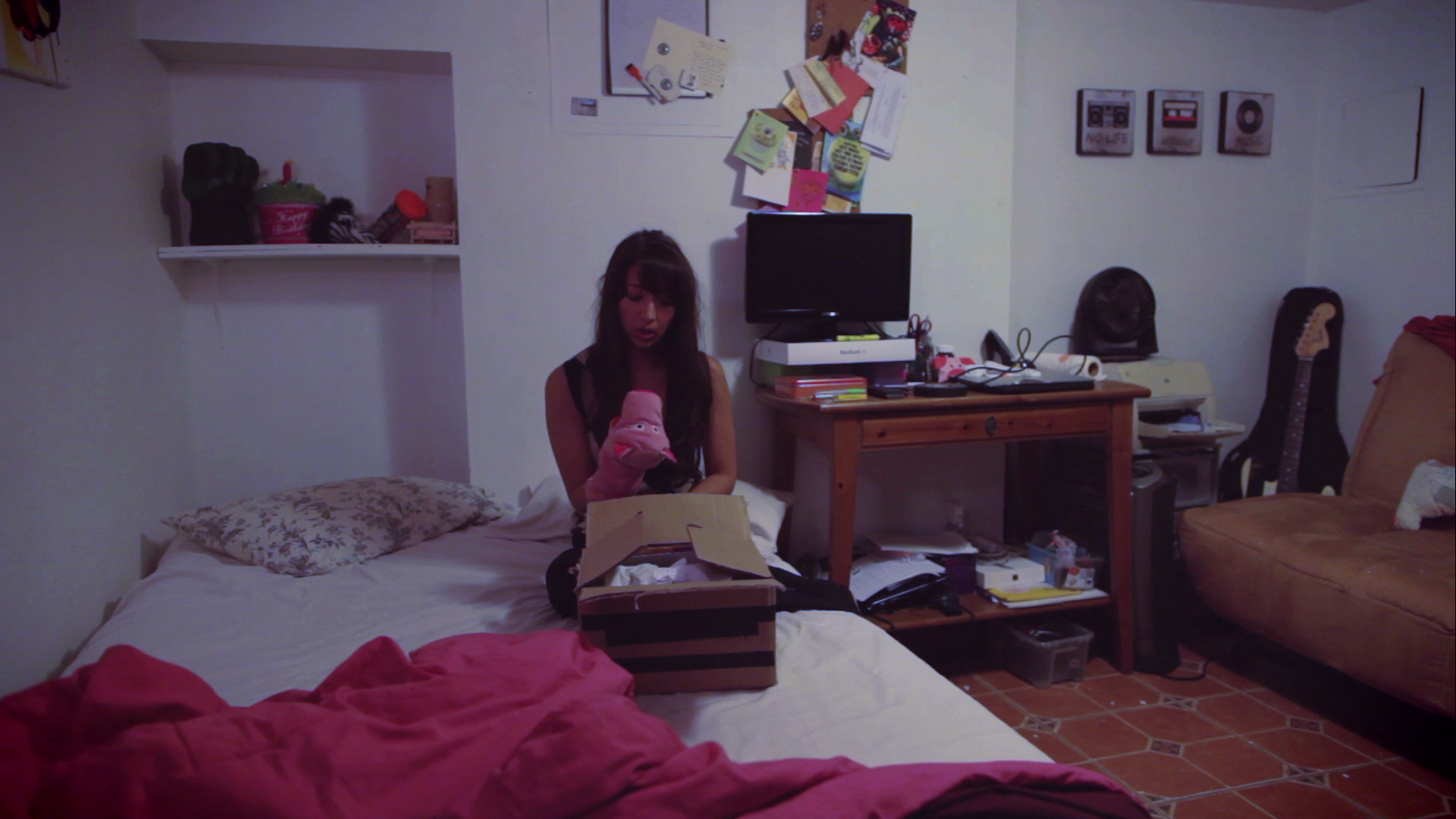Hello to all our wonderful "Kelsey" fans,
Christina here. Some of the more cinephile-type fans of the series have asked questions about the look of the show over the past couple months. So I thought it’d be fun to write a blog series about some of the artistic choices behind "Kelsey". This is the first of what will be 5-10 posts discussing each episode; I may combine a couple episodes depending on how much I decide to say. This one will be the longest, though, because I'm setting up the series as a whole before diving into a specific episode. So here it goes, starting with episode 1 (Palette Cleaner).
If you don’t know the story of how “Kelsey” came to be, read it in Kelsey Rauber’s words HERE. It was back in July of 2012 that we had that dinner and the idea to turn her hilariously bizarre but incredibly relatable story into a web series first occurred to me. I told her that what I found so compelling about her story was the way in which she told it to me. Her hindsight commentary was a big part of what made the story so entertaining. When she said that she would start writing immediately, I told her that she should try to retain her comedic storytelling style as a character in the writing of the series itself. So, we initially came up with the idea that Kelsey, the character, could be retelling the story of this event in the form of a video blog and part of it would be portrayed through flashbacks, while the other part her commentary. However, talking to the camera has become such common practice in comedy now that I’m so glad that that idea was eventually nixed. Kelsey wrote her first draft and it was funny but not nearly as funny as it later became when the new non-linear motif was tested in her second draft in February of 2013. Kelsey had come up with the idea that the character of Kelsey would be telling the same story to her friends separately and the audience would be able to follow it partially through flashbacks and partially through the non-linear moments of interaction with her friends throughout the episodes. I thought this was absolutely brilliant and unlike anything currently happening in comedy right now.
So we decided to roll with this structure and, after we brainstormed on where we wanted the series to go as a whole, Kelsey began writing future episodes and I brought on our DP Peter Westervelt; then we began casting. This is where I’m going to stop telling background to how the show came together. I just wanted to set up the narrative structure of the series as a way to get into the aesthetic choices behind it.
The prospect of the series including flashbacks and a general non-linear structure made the series more exciting for me from a directing standpoint and allowed me to have some interesting brainstorming sessions with Peter (as mentioned, the series Cinematographer) on how we could create a visual distinction between past and present. I initially proposed the idea that we commit to shooting the flashbacks on a specific lens, which we would never use in the present, in order to create a subtle but intentionally different look between the two time periods of each episode. This is something I had seen done in Blue Valentine, one of my favorite films. But Peter, rightfully, brought up the fact that that would be very limiting for the visual storytelling, especially with tight locations to contend with. Peter then suggested that we have some sort of camera movement for every time we introduce the past in an episode. I loved this idea, so we decided that the main way we'd differentiate the past from the present would be to slide into the past and cut out to the present. This is a rule, I’m proud to say, we maintained throughout the whole series. This is a part of why I think it’s so necessary to plan and ideally shoot a season of your web series as one whole entity because, even if you are thinking of each episode as standalone, you can make artistic choices that go a long way. (From a producing standpoint, as well, it’s just incredibly naïve not to shoot your whole season together before launching your pilot in regards to time efficiency, cost effectiveness and consistent distribution. But I’m not talking producing here. This is the director side of me writing this post.)
Another motif for the series that I wanted to convey was the idea of building up to close-ups. This is something I generally incorporate into all my work, especially if tension building is a big aspect for the film as a whole, even in comedies ("S.K.A."). It was definitely an integral aspect of the cinematography for my feature film Summit, and I was actually producing "Kelsey" right off the heels of shooting Summit. I suppose I wanted to find a way to use that motif very specifically again because it worked so well in the film. The way I worked it into "Kelsey" was by using wides early on as a way to introduce you to Kelsey’s world in relation to her.


